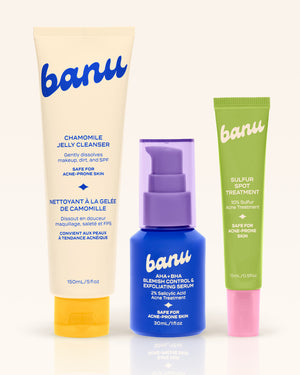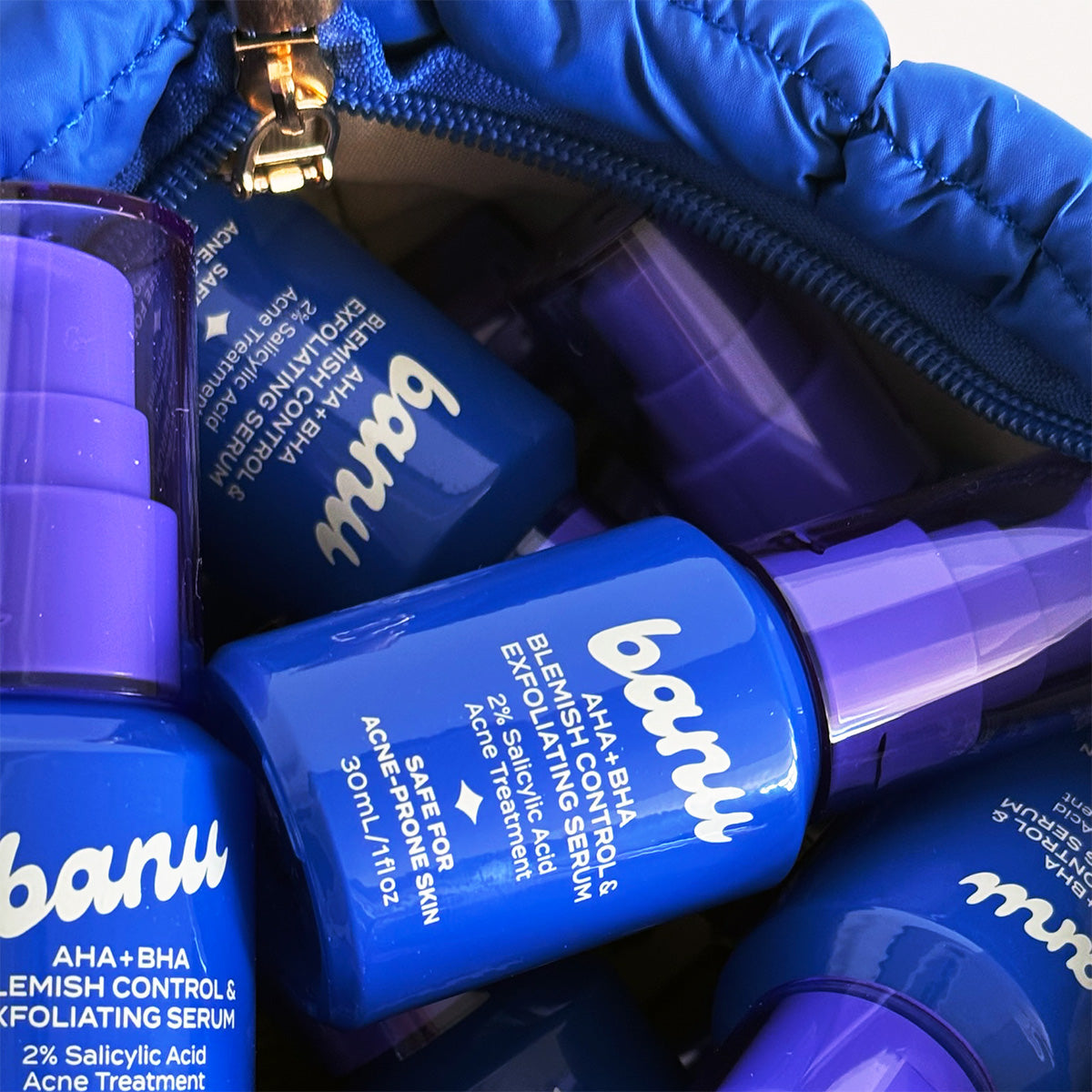Understanding Different Types of Acne—and How to Treat Them
30 May, 2025

by banu editorial team
When you see a breakout, it’s tempting to reach for a pimple patch and move on. But when those breakouts keep coming back—or feel different than before—it helps to know what’s really happening under your skin.
The truth is, not all acne is the same—and what works for one type might not work for another. By learning how to spot the different types of acne, you can choose the right treatment plan and support your skin more holistically.
What Causes Acne?
Breakouts form when your pores become clogged with:
- Excess oil (sebum)
- Dead skin cells
- Bacteria
-
Sweat or product buildup
This buildup creates the perfect environment for inflammation and pimples to form. These breakouts can appear anywhere—your face, chest, back, neck, or shoulders.
Your skin is influenced by what you eat, your hormones, your environment, and what you apply to it. That’s why understanding what type of acne you’re dealing with is key.
Types of Acne: What Do You Have?
Most pimples fall under acne vulgaris, which is the umbrella term for common acne types like whiteheads, blackheads and cysts, and they usually form from clogged pores.
Let’s break it down by type, location, and what it feels like—so you can choose a treatment plan that actually works.
Whiteheads
These are considered comedonal acne and consist of closed comedones, meaning the pore is blocked below the surface. They show up as a small, round, white bump on the surface of the skin—often on your forehead, chin, or around your nose.
They form when oil and dead skin are trapped inside the follicle with no air exposure.
Best treated with:
- Salicylic acid to unclog pores
- Sulfur to reduce oil and kill bacteria
- Hydrocolloid patches for overnight protection
Blackheads
These are open comedones, where the pore is clogged but exposed to air—causing the contents to oxidize and turn dark.
They’re often found on the nose, chin, and T-zone and can also appear on the back and chest.
Best treated with:
- Salicylic acid or BHA exfoliants
- Clay masks to absorb oil
- Gentle, consistent cleansing
Cystic Acne
Cystic acne is a more severe type of inflammatory acne. These are painful, deep, pus-filled bumps that never come to a head. They often feel swollen and tender to the touch, and they’re the most likely to cause scarring.
Cystic acne forms when clogged pores—often fueled by overactive sebaceous glands—trigger an intense inflammatory response deep in the dermis (middle layer of your skin).
Often influenced by:
- Hormonal fluctuations
- Genetics
-
Stress
Best treated with:
- Topical sulfur or salicylic acid (to soothe inflammation)
- Derm-prescribed treatments (like retinoids or oral antibiotics)
Keeping hands off to avoid further irritation
Nodular Acne
Nodular acne is similar to cystic acne but presents as large, solid, and deeply rooted lumps that last for weeks—or even months. Unlike cysts, acne nodules are firmer and don’t contain pus.
They’re red, painful, and very slow to heal.
Tip: If you're unsure whether you're dealing with nodular or cystic acne, consult a dermatologist—both require long-term strategies.
Hormonal Acne
This acne is driven by shifts in hormone levels. You’ll typically notice it flaring around:
- Your period
- Pregnancy, menopause, or PCOS
-
Times of increased stress
Hormonal acne is especially common among teens and young adults, but it can persist well into adulthood. In teens, it appears in the T-zone. In adults, it’s more common around the jawline, chin, and lower cheeks.
Best treated with:
- Acne-safe skincare with niacinamide or azelaic acid
- Anti-inflammatory support from diet and lifestyle
- Medical help if breakouts are chronic and painful
Fungal Acne
Technically not true acne, fungal acne is caused by yeast overgrowth in the hair follicles (Malassezia). It presents as small, itchy red bumps—often on the forehead, back, or chest.
Common causes include:
- Excess sweating or heat
- Antibiotic use
-
Heavy, oil-based skincare or haircare products
Best treated with:
- Anti-fungal shampoos or topicals
- Keeping the area clean and dry
- Avoiding comedogenic and occlusive ingredients
What’s Mild, Moderate, or Severe Acne?
It can help to know where you land on the spectrum:
- Mild acne: Mostly whiteheads or blackheads, with a few pustules or papules
- Moderate acne: More inflamed pustules and papules, with fewer comedones
-
Severe acne: Painful nodules, cysts, or widespread breakouts that may scar
If your breakouts are painful, cover large areas, or leave marks behind, it’s a good idea to check in with a dermatologist for a long-term plan.
The Takeaway: Know Your Acne to Treat It Better
The first step to treating your skin is understanding the various types of acne. From whiteheads to cystic acne, each type responds best to a different approach—and knowing the difference means you can care for your skin smarter.
Acne is normal. But you deserve more than just “managing” it. With the right acne-safe skincare, a little knowledge, and a routine tailored to your skin type, you can make real progress—without giving up on your other skincare goals.

Author
banu editorial team










































